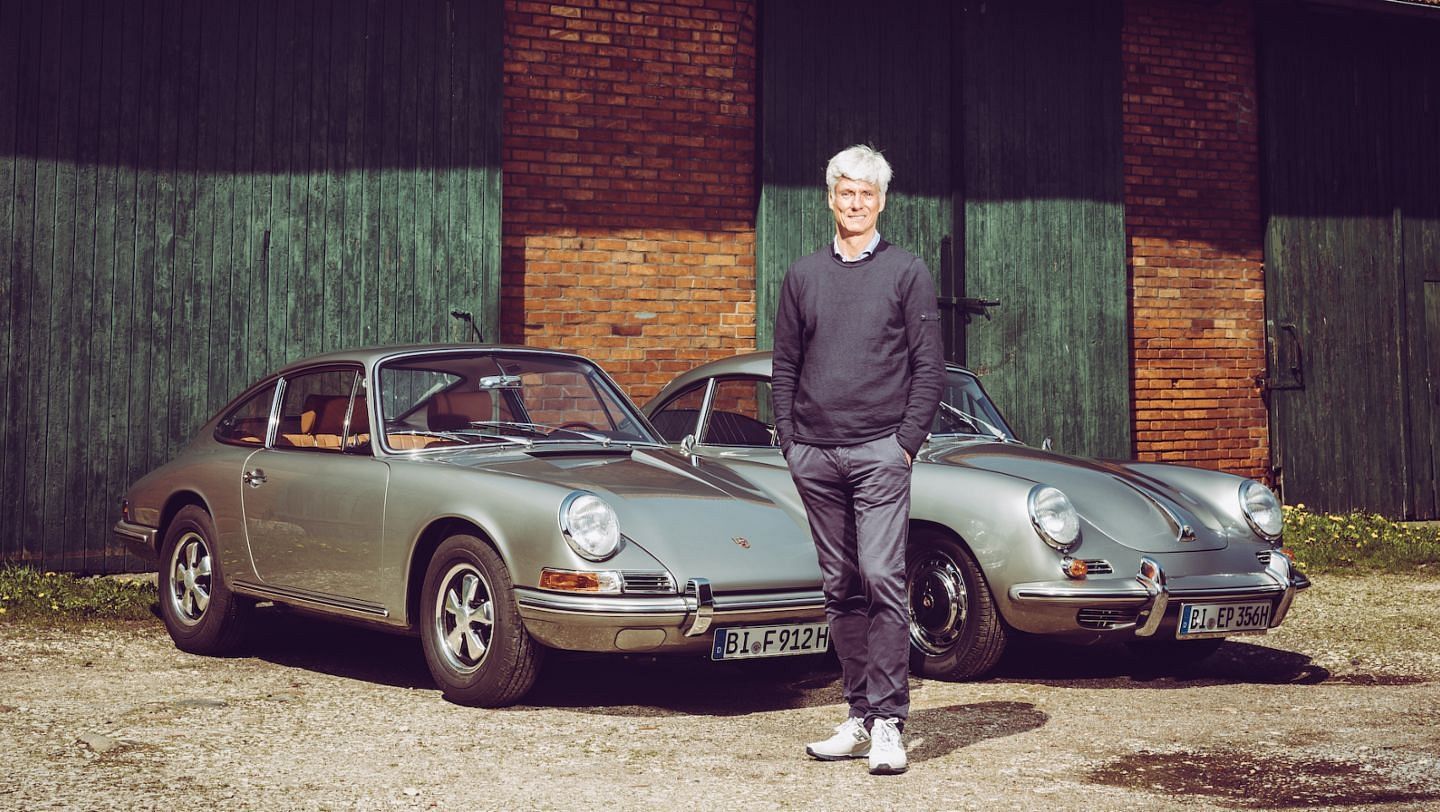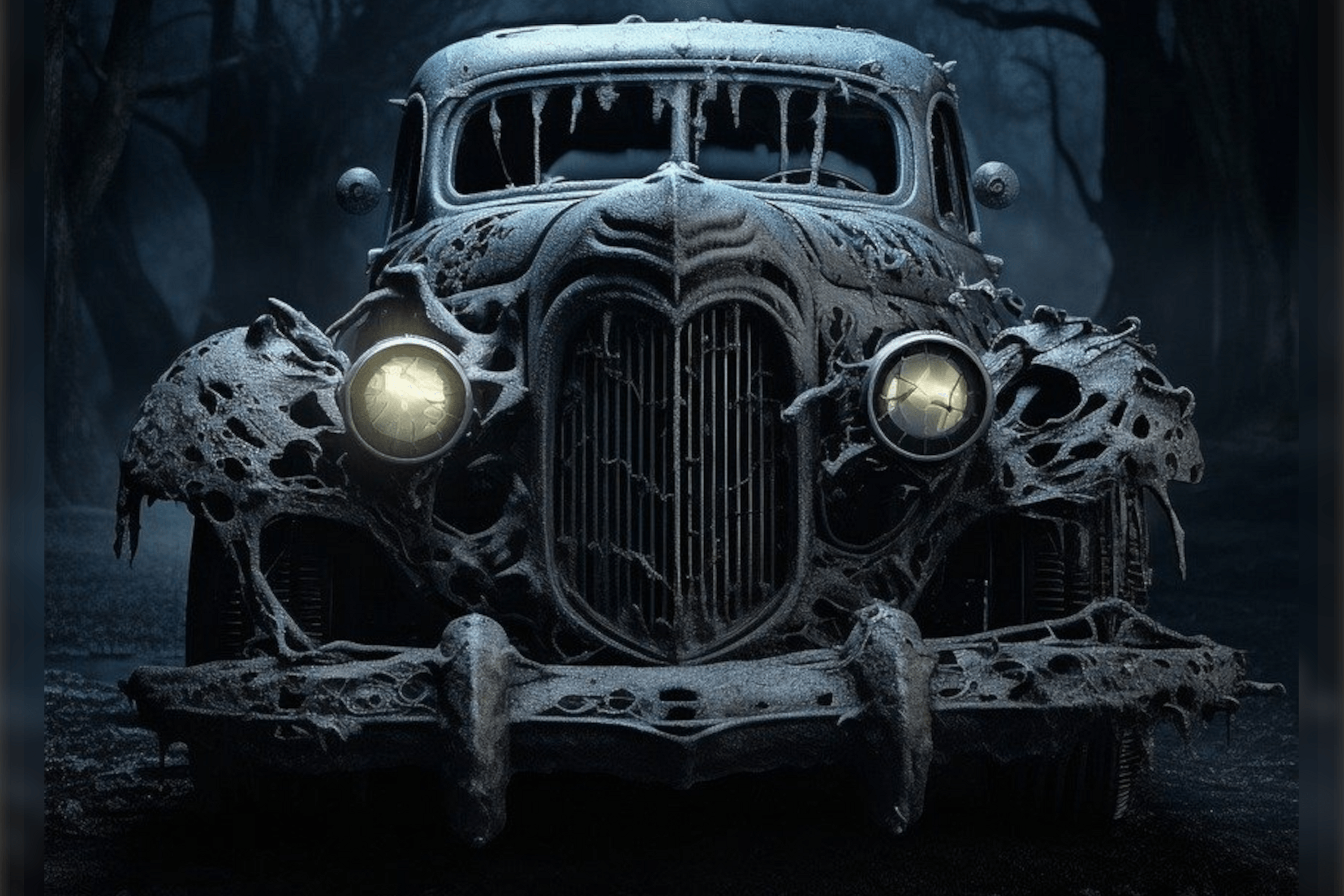The Cursed Little Bastard That Killed James Dean
Quick Links
- James Dean’s Racing Career
- The Untimely Passing Of James Dean
James Byron Dean was a celebrated and beloved Hollywood icon. His claim to fame was his acting career. However, while his work in film remains the most well-known aspect of the Indiana-born actor, Dean was involved in auto racing, and as much as it was a passion when he was alive, it would also play a key role in his death.

Porsche
Porsche is a German sports car manufacturer and part of the broader Volkswagen Group since August 2012. Founded in 1931 by Ferdinand Porsche, the brand is most famous for the 911 line of sports cars, which first launched in September 1963. But it was the Porsche 356 that came first, and subsequently, Porsche has expanded its model lineup to include a variety of sports cars, supercars, SUVs, sedans, and even EVs. Porsche has a rich history in motorsport, with 19 outright Le Mans victories to its name, among various other titles.
- Founded
-
1948
- Founder
-
Ferdinand Porsche
- Headquarters
-
Stuttgart, Germany
- Owned By
-
Volkswagen
- Current CEO
-
Oliver Blume
Gone too soon, James Dean met an untimely end at the young age of 24. At the center of the American actor’s death was a Porsche 550 Spyder, which was also known as the “Little Bastard”.
The Little Bastard
Giving nicknames and pet names for cars isn’t uncommon; we’ve all done it. However, James Dean’s Porsche 550 Spyder received the nickname “Little Bastard” from Bill Hickman, who referred to Dean as “Little Bastard” and to himself as “Big Bastard”. Dean’s nickname would be passed down to his silver Porsche 550 Spyder, which the actor seemingly impulsively took ownership of after trading in his Porsche 356 Speedster, in a quest for a quicker car.
The Porsche 550 Spyder was a sports car from 1953 to 1956 designed for racing and will forever be remembered as a legend. Only 90 examples were produced, and it quickly became a dominant force in the 1.1- and 1.5-liter racing classes. The 550 Spyder was inspired by the 356, and was a mid-engine car with an air-cooled 1.5-liter flat-four engine. A total of 110 hp and 89 lb-ft of torque was on tap from the flat-four engine, and it was paired with a five-speed manual transmission. While this wasn’t a lot of power by any definition, the 550 Spyder weighed a mere 1,212 lbs and could reach a top speed of 143 mph.

Related
Why The Porsche 911 Isn’t The True Successor Of The 356
Two icons deserve to be together.
It seems fitting that an American icon, remembered as a free spirit and a symbol of nonconformity, would trade in their lightweight, rear-wheel-drive sports car for a car that was bred from the ground up as a race car. We’d imagine that today it would be akin to trading in a Porsche 718 Cayman for a 718 Spyder RS and using it as a daily driver. We can’t blame him. Most of us would do the same if money and practical considerations weren’t a concern. James Dean’s example of the Porsche 550 Spyder was one of the first 90 units produced and one that would be used for its intended purpose: racing.
James Dean’s Racing Career
While not nearly as widely discussed by the non-automotive-obsessed public, James Dean had a storied and fairly extensive racing career. Before the arrival of the Porsche 550 Spyder, Dean purchased a 1955 Triumph Tiger T100 650 cc motorbike and, soon after, a 1953 MG TD. He would take part in the Palm Springs Road Races with the Porsche 356 Speedster before filming of the Rebel Without A Cause began. Dean would see success in his racing endeavors, securing an overall pole position for the novice class held on the Friday and second overall at the main event held on the Saturday.

Related
10 Of The Most Haunted Cars In Automotive History
You wouldn’t want to park any of these near your house.
Dean entered the Porsche 356 Speedster a few months later, finishing first in his class and third overall. His final race with the Porsche Speedster was on May 30th, where he started in 18th position and ultimately fought his way up to fourth before his car’s engine dismantled itself. James Dean was a proper gearhead, putting a down payment on a Lotus Mark IX race car after being barred from racing by the Warner Brothers. After the filming of the movie “Giant” concluded, Dean would trade in the Porsche 356, marking the arrival of the “Little Bastard”.
Soon after, Dean planned to enter the Salinas Road Race. Dean would also purchase a 1955 Ford County Squire station wagon, which at the time still had some wood external trim, which was common on the early American station wagons. The wagon would transport the Porsche 550 Spyder from one race to another.
The Untimely Passing Of James Dean
James Byron Dean was born on the 8th of February 1931 and died on September 30th, 1955. On the last day of his life, he was preparing Little Bastard for its race outing at Salinas. Initially, Dean intended to tow the Porsche 550 Spyder to the race, but because the car had barely been driven, it did not have enough mileage recorded to qualify for the race, so he needed to do a break-in run.
As such, he drove Little Bastard to Salinas, breaking in the engine and getting a feel for the car before the races. Dean was hoofing it to California, reportedly collecting a speeding ticket on his way. Sometime in the afternoon, a 1950 Ford Tudor driven by a 23-year-old Navy veteran was heading east on US 466, while at roughly the same time, Dean would put his foot down and pull out a gap between the Little Bastard and the station wagon following behind, driven by Bill Hickman.

Related
The Unseen Sports Cars Porsche Kept Hidden For Years
Turns out, Porsche has a secret collection of epic sports cars like these seven particularly fascinating rides.
The Ford Tudor took a turn onto SR 41 toward Fresno and, in doing so, crossed the center line into the path of Dean’s car. Reports state that Dean tried to avoid a head-on collision, but to no avail. It was a brutal crash, sending the Little Bastard cartwheeling and impacting the ground several times. The force of the impact was so significant that the much heavier Ford Tudor was sent sliding about 39 feet and the Little Bastard was a wrangled wreck, from which a dying James Dean was pulled. Dean was rushed to the Paso Robles War Memorial Hospital, which was 28 miles from the crash site, but he was pronounced dead on arrival. The attending physician ruled Dean’s cause of death a broken neck, multiple fractures, multiple broken bones, and significant internal injuries.
A Chilling Legacy
After the crash that killed James Dean, the Little Bastard would only continue to be followed by disaster and misfortune long after Dean’s accident. A salvage yard in Burbank, California, would sell the car to Dr. William Eschrich. Dr. Eschrich stripped the car’s parts, transferring elements like the flat-four engine into his Lotus IX car. Troy McHenry, a doctor and race car driver, were loaned the transmission and suspension components from the Little Bastard.
Unfortunately, Dr. Eschrich’s Lotus IX race car crashed at the 1956 Pomona sports car races, but he walked away with his life. Troy McHenry participated in the same race. Unlike Dr. Eschrich, who would survive his crash, McHenry hit a tree and died. While its innards were removed and passed around, the car would be sold to George Barris, who vowed to rebuild it, despite photos of the car’s mangled remains indicating that it was beyond repair.

Related
1955 Porsche 550 Spyder Worth Millions Unearthed After 35 Years
This is one special find.
The car was turned into a display by the National Safety Council and displayed at different car shows, movie theaters, and bowling alleys. Reportedly, it caught fire while in storage, but suffered little additional damage. A tire blowout caused the owner to lose control and leave the road. But its story would not end there.
The Little Bastard fell from its display stand, breaking the hip of an onlooker. Another chilling tale from the Little Bastard’s later years was that it fell on and killed George Barkus, who was, ironically, transporting the car to a safety expo. After many years and unfortunate events, the Little Bastard would disappear while on its way from Miami to Los Angeles, which some have speculated was a ploy by George Barris to keep the rumor mill and intrigue alive. The car is still missing, and the legend of the Little Bastard continues.
Sources: Porsche, Hagerty.